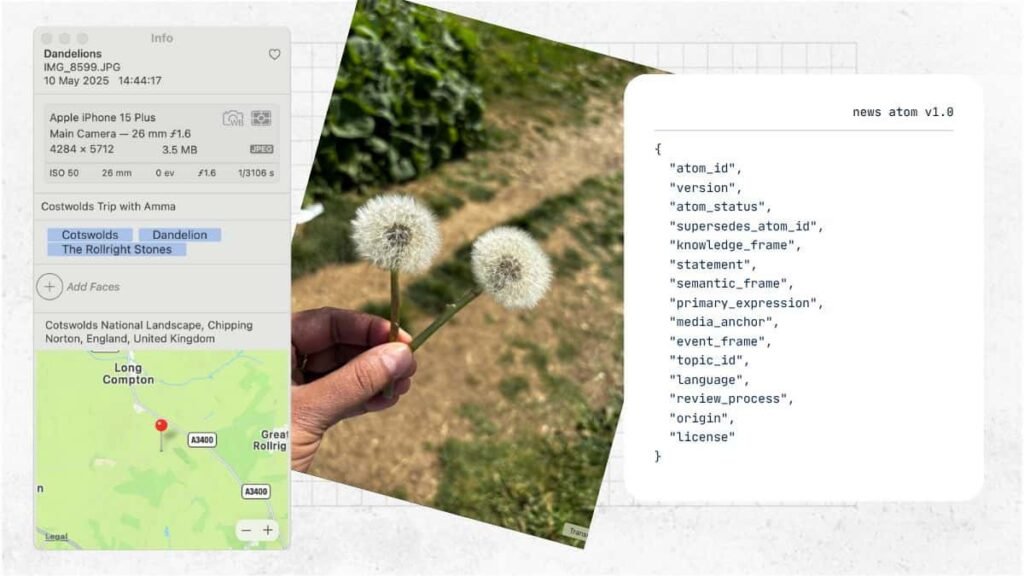OSINT vs. AI? Do you truly believe a machine can understand irony, cultural context, or the subtle weight of a deleted social media post?
If you’re trusting an algorithm to handle your most critical intelligence gathering, you might be confusing data volume with genuine insight.
Open-Source Intelligence (OSINT) is more than just running a search query. It’s a structured methodology, an investigative discipline that transforms raw, publicly available information into actionable knowledge. In the age of Large Language Models (LLMs) that churn out facts stripped of their provenance and temporal context, the human element in OSINT—the ability to assess risk, interpret tone, and trace the source—has never been more vital.
This is the ultimate confrontation: vast, indiscriminate data processing versus targeted, ethically sound human judgment.
The Epistemic Problem: What AI Misses
Intelligence generated by AI, while grammatically correct and coherent, often suffers from a critical flaw: a lack of epistemic signals. This means the data is stripped of the crucial context added by a journalist or analyst: attribution, verification robustness, and source trace.
An AI treats a quote from a verified source, a journalist’s fact-check, and a random internet chatter as equally weighted pieces of ‘text’. It fails to differentiate between “what happened” (the fact) and “why it matters” (the sense-making layer added by a human). This is a massive issue when an investigation hinges on credibility.
Why Provenance is Non-Negotiable
One of the greatest economic and informational dangers of the AI era is the elimination of provenance.
The current design of most AI systems makes attribution incredibly difficult by default. If your investigation relies on the source trail—knowing who said what and when—an AI-generated report is fundamentally broken.
In contrast, human-led OSINT demands a verifiable audit trail:
- Documentation: Every source and query must be documented to allow for traceability and validation under audit.
- Timestamps: All data collection must be timestamped to support chronological integrity in a finding.
- Source Verification: Findings should be cross-verified using multiple sources to ensure accuracy and reduce false positives.
The Anatomy of a Superior OSINT Investigation
The foundation of a good article or investigation rests on the “5 Ws (+1)” model: Who, What, When, Where, Why, and often How. This is the classic rule of journalism and the backbone of any effective OSINT inquiry.
The Intelligence Cycle, Human-Style
Effective OSINT is not a chaotic data dump; it’s a structured cycle. Unlike the passive data collection of a general AI, a human-led operation defines its objectives and then uses targeted techniques.
- Planning: Define clear objectives, scopes, and the exact data needed for the investigation. What are we trying to find out?
- Collection: Use specific techniques like Google Dorking for advanced search operators or Reverse IP Lookup to find related domains on a server. This isn’t general web browsing; it’s a sniper shot.
- Processing & Analysis: This is where the human edge is sharpest. It involves applying techniques like link analysis or pattern recognition to extract meaningful insights, not just raw data.
- Dissemination: Share the findings in a format that enables quick, clear decision-making.
Case Study: Metadata Extraction for Digital Forensics
A common OSINT task is image verification. An AI can confirm if an image exists online, but it often misses the crucial details hidden within the file itself.
Tutorial: Leveraging Metadata (The Human Way)
- The Tool: Use a free, reliable metadata extraction tool (like ExifTool or an online equivalent).
- The Action: Upload the image.
- The OSINT Gold: Look for the EXIF Data. This frequently includes the exact date, time, and location (GPS coordinates) where the photo was taken, as well as the make and model of the device (e.g., Apple iPhone 15 Plus).
- The Human Analysis: Cross-reference the GPS coordinates with the claimed location of the event. A simple fact-check like this can debunk an entire false narrative in seconds. This isn’t data collection by an LLM; it’s connecting the dots to establish a verifiable timeline.
The Future is Augmentation, Not Replacement
Does AI have a role? Absolutely. LLMs and AI tools excel at the laborious, time-consuming tasks: identifying recurring language patterns (like those “safe” adjectives or overused passive voice typical of AI output), translating content, and structuring raw data.
In fact, the proposed News Atom metadata model is designed to use a machine-readable format to preserve those essential journalistic signals—attribution, temporal context, and source—that AI currently strips away. The very concept proves that the industry is fighting to retain the human-added value before the AI gets its hands on it.
But always remember: human oversight is essential for interpreting tone, understanding cultural context, differentiating between credible and fringe sources, and making the final judgment on material risk.
Final Reflection
The goal of OSINT is to find the story—the hidden connection, the suppressed fact, the critical detail. AI can process the words, but only a human can read the room.
Don’t let your intelligence gathering become a series of generic summaries riddled with predictable structures, corporate jargon, and risk-averse phrasing. That’s how you get content that’s correct but utterly useless in an investigation. The human touch—that sharp, incisive critique, the ability to pivot the moment you find a single, tiny anomaly—is your competitive edge.
Want to level up your investigation skills? Stop treating the internet like a polite library.
Master Google Dorks and learn to chase the trail of metadata. Share your most surprising OSINT find in the comments below.
Join our Community and Subscribe:
-Newsletter: https://osintaipertutti.substack.com
-Telegram: https://t.me/osintaipertutti




